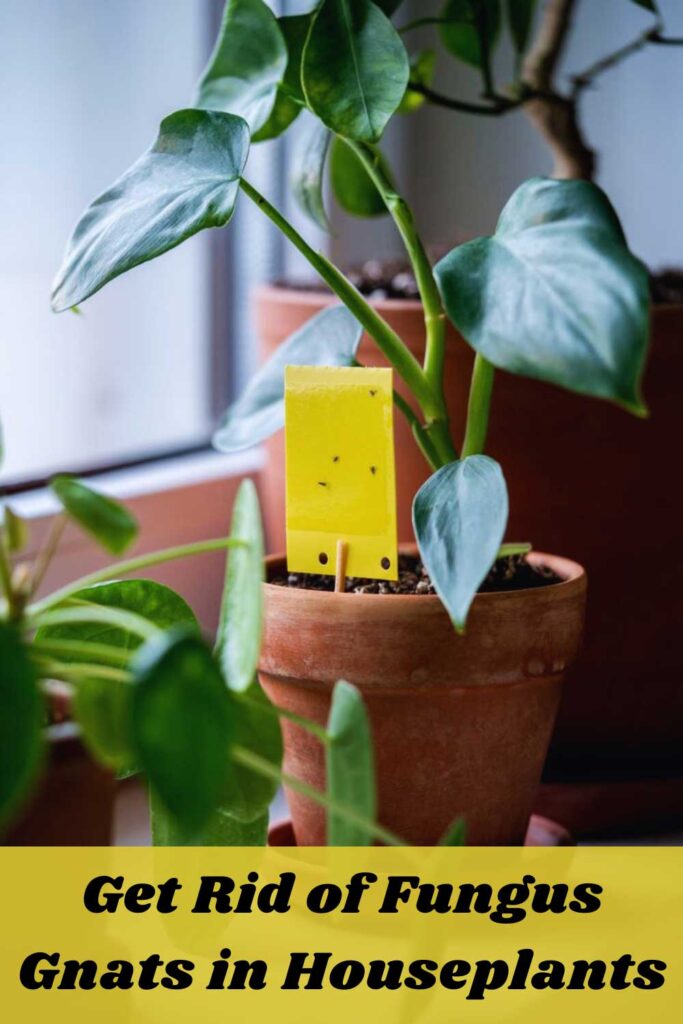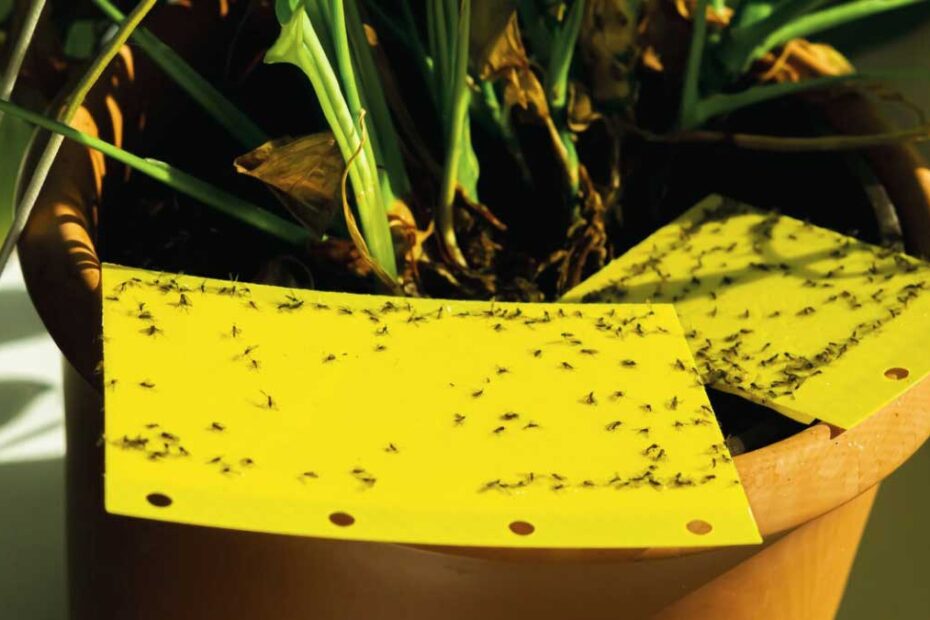Fungus gnats can turn your indoor plant paradise into a nightmare. These tiny, pesky insects thrive in the moist soil of your beloved houseplants, causing damage to roots and spreading diseases. If you’ve noticed small flies buzzing around your plants or larvae wriggling in the soil, it’s time to take action.
Understanding how to effectively get rid of fungus gnats is crucial for maintaining healthy plants. You’ll need a combination of preventive measures and targeted treatments to tackle these unwelcome guests. Let’s jump into the best strategies to eliminate fungus gnats and keep your houseplants thriving.
Key Takeaways
- Identify Infestation Signs: Look for small flies buzzing around plants or larvae in the soil as key indicators of fungus gnat presence.
- Proper Watering: Avoid overwatering to prevent a suitable breeding ground for fungus gnats. Allow the top 1-2 inches of soil to dry between watering sessions.
- Natural Remedies: Use neem oil, hydrogen peroxide solution, or beneficial nematodes to naturally and effectively control fungus gnat populations.
- Chemical Solutions: Insecticidal soaps and systemic insecticides can be employed for severe infestations, providing immediate and long-lasting relief.
- Preventive Measures: Regularly sanitize gardening tools, check plant soil, use sticky traps, and aerate soil to prevent a fungus gnat infestation.
- Maintenance and Monitoring: Consistent soil checks, use of sticky traps, and vigilant monitoring are crucial for early detection and management of fungus gnats.

Understanding Fungus Gnats
Fungus gnats are small insects that affect indoor plants, primarily by attacking the roots. Understanding their characteristics and life cycle helps in combating them effectively.
Life Cycle of Fungus Gnats
Fungus gnats go through four stages: egg, larva, pupa, and adult. The egg stage lasts about three days. Larvae, visible in the soil, then feed on organic matter and roots for two weeks. Following a six-day pupal stage, adults emerge, living for about one week.
Signs of Infestation
You might notice tiny flies around your plants, especially when disturbed. Look closely at the soil; larvae can be seen wriggling through it. Plants may exhibit poor growth, yellowing leaves, and root damage. These symptoms suggest a fungus gnat problem.
Preventative Measures
Preventative measures protect houseplants from fungus gnats by reducing factors that attract them. Adopting these practices minimizes the chances of infestation, ensuring healthier plants.
Proper Watering Techniques
Proper watering techniques are essential to deter fungus gnats. They thrive in moist environments.
Overwatering:
Continuous moist soil creates the perfect breeding ground for fungus gnat larvae. Allow the top 1-2 inches of soil to dry out between watering to disrupt their lifecycle.
Watering schedule:
Water plants only when necessary. Use a soil moisture meter to check the moisture levels accurately. A consistent watering schedule tailored to each plant’s needs prevents excess dampness.
Drainage:
Ensure that pots have proper drainage. Standing water at the bottom of pots fosters gnat development. Place a layer of small rocks or gravel at the bottom of the planter to enhance drainage.
Sanitizing Gardening Tools
Sanitizing gardening tools prevents fungus gnats and other pests.
Cleaning tools:
After use, clean tools with soap and hot water to remove soil and plant debris. Fungus gnat eggs can hitch a ride on dirty tools.
Disinfecting:
Disinfect tools by wiping them with a solution of rubbing alcohol (70% isopropyl alcohol) or a 10% bleach solution. Focus on parts that come into contact with soil.
Storage:
Store tools in a clean, dry environment. Airtight containers or organized storage units keep tools free from contaminants.
Monitor & Maintain
Regular monitoring and maintenance protect plants from fungus gnat infestations.
Inspect plants:
Regularly check plants for signs of gnats. Look for tiny flies around the plants or larvae in the soil.
Sticky traps:
Place yellow sticky traps around plants to capture adult gnats. These traps help monitor and reduce the gnat population.
Soil aeration:
Aerate the soil regularly using a small fork. Aeration prevents soil compaction, improving drainage and reducing places for larvae to hide.
By implementing these preventative measures, you cultivate a healthier environment for your houseplants, effectively reducing the risk of fungus gnat infestations.
Natural Remedies
Natural remedies effectively combat fungus gnats without harmful chemicals. Here are some trusted methods to help your houseplants thrive.
Neem Oil
Neem oil disrupts the growth and reproduction of fungus gnats.
Usage Instructions:
- Mix 1-2 tablespoons of neem oil with 1 gallon of water.
- Add a few drops of dish soap to emulsify.
- Spray the solution on the soil and plants, focusing on areas with visible gnats or larvae.
- Repeat every week for ongoing protection.
Neem oil can manage gnats without harming beneficial insects or plants.
Hydrogen Peroxide Solution
A hydrogen peroxide solution targets larvae in the soil.
Preparation and Application:
- Mix 1 part hydrogen peroxide (3% solution) with 4 parts water.
- Pour the mix directly onto the soil, evenly covering the surface.
- Allow the soil to dry out between treatments.
The solution should fizz, indicating it’s killing larvae while oxygenating the soil.
Beneficial Nematodes
Beneficial nematodes parasitize and kill fungus gnat larvae.
- Purchase nematodes like Steinernema feltiae from a garden center.
- Follow package instructions to mix nematodes with water.
- Apply the solution to the soil, ensuring even coverage.
- Water the soil lightly after application to help nematodes infiltrate.
Beneficial nematodes provide a long-term solution by establishing a natural predator-prey balance in the soil.
These natural remedies help maintain a healthy environment for your houseplants, effectively reducing the presence of fungus gnats. Use these methods consistently for the best results.
Chemical Solutions
Chemical solutions can effectively control a severe fungus gnat infestation in your houseplants. While natural remedies are preferable for sensitive environments, sometimes you might need to turn to chemical products for a more immediate solution.
Insecticidal Soaps
Insecticidal soaps are a safe and effective method to eliminate fungus gnats. These soaps contain fatty acids that penetrate the insect’s cell membrane, causing them to dehydrate and die.
Key Points about Insecticidal Soaps:
- Compatibility: Safe for most houseplants.
- Application: Directly spray on affected soil and plant surfaces.
- Effectiveness: Targets soft-bodied insects like gnats.
Steps to Use:
- Dilute the soap as per the product’s instructions.
- Test on a small plant area first to ensure no adverse reaction.
- Spray the solution directly on the soil and any visible gnats.
- Repeat the process every few days until the infestation diminishes.
Systemic Insecticides
Systemic insecticides offer a more aggressive approach by being absorbed through the plant’s roots and spreading throughout its tissues. These insecticides kill pests that feed on any part of the plant.
Key Points about Systemic Insecticides:
- Mechanism: Absorbed by the plant, making its entire structure toxic to pests.
- Duration: Provides long-lasting protection.
- Effectiveness: Eliminates both larvae and adult fungus gnats.
- Choose a systemic insecticide labeled safe for houseplants.
- Measure according to the product instructions.
- Apply the insecticide to the soil during a regular watering session.
- Reapply as directed, usually every 3-4 weeks, to maintain protection.
Using chemical solutions like insecticidal soaps and systemic insecticides ensures that you can effectively manage and eliminate fungus gnat infestations in your houseplants.
Maintenance and Monitoring
Regular maintenance and vigilant monitoring are critical to keeping fungus gnats at bay. Spotting infestations early prevents damage to your houseplants and keeps them healthy.
Consistent Soil Check
Performing consistent soil checks helps control fungus gnat populations. Inspect the soil for signs of larvae and other indicators twice weekly.
Key Indicators:
- Moist Soil: Fungus gnats thrive in overly moist conditions. You’re advised to ensure your soil isn’t waterlogged.
- Visible Larvae: Small, white larvae on the soil surface signify a gnat problem.
- Mold Presence: Fungus gnats feed on mold; spotting mold indicates a conducive environment for them.
Sticky Traps
Sticky traps are an effective tool for monitoring and reducing adult fungus gnat populations. Place traps near affected plants for best results.
- Placement: Position traps around the base of houseplants or hang them at foliage level.
- Inspection: Check traps weekly. Replace when they become saturated with gnats.
- Quantity: Use multiple traps for larger areas to ensure thorough monitoring.
Combining these maintenance and monitoring techniques with other preventive measures ensures a healthy, gnat-free environment for your houseplants.
Conclusion
By understanding the life cycle of fungus gnats and recognizing the signs of infestation, you can take proactive measures to protect your houseplants. Implementing proper watering techniques, sanitizing tools, and maintaining a consistent care routine will create an environment less conducive to these pests.
Natural remedies like neem oil, hydrogen peroxide solutions, and beneficial nematodes offer effective, eco-friendly options for managing fungus gnats. When infestations are severe, chemical solutions such as insecticidal soaps and systemic insecticides can provide immediate relief.
Regular maintenance and vigilant monitoring are crucial in keeping fungus gnats at bay. By combining these strategies, you can ensure your houseplants remain healthy and gnat-free, allowing them to thrive in your indoor garden.
Frequently Asked Questions
What are the signs of a fungus gnat infestation?
Signs of a fungus gnat infestation include small flies around your plants, larvae in the soil, poor plant growth, yellowing leaves, and root damage.
How long is the life cycle of fungus gnats?
The life cycle of fungus gnats has four stages: egg (about 3 days), larva (2 weeks), pupa (6 days), and adult (1 week).
How can I prevent fungus gnat infestations?
Prevent fungus gnat infestations by allowing the top 1-2 inches of soil to dry between waterings, ensuring proper drainage, sanitizing gardening tools, and regularly inspecting plants.
Are there natural remedies to combat fungus gnats?
Yes, natural remedies include using neem oil to disrupt growth and reproduction, hydrogen peroxide solutions to target larvae, and beneficial nematodes to kill larvae.
What chemical solutions work for severe fungus gnat infestations?
For severe infestations, insecticidal soaps and systemic insecticides are effective. Insecticidal soaps dehydrate gnats, while systemic insecticides provide long-lasting protection by making plants toxic to pests.
How important is regular maintenance and monitoring?
Regular maintenance and monitoring are crucial. Consistent soil checks and the use of sticky traps help control gnat populations and maintain a gnat-free environment for houseplants.
What are sticky traps, and how do they help?
Sticky traps capture adult fungus gnats, helping monitor and reduce their populations. Place traps near affected plants and inspect them regularly for optimal results.
